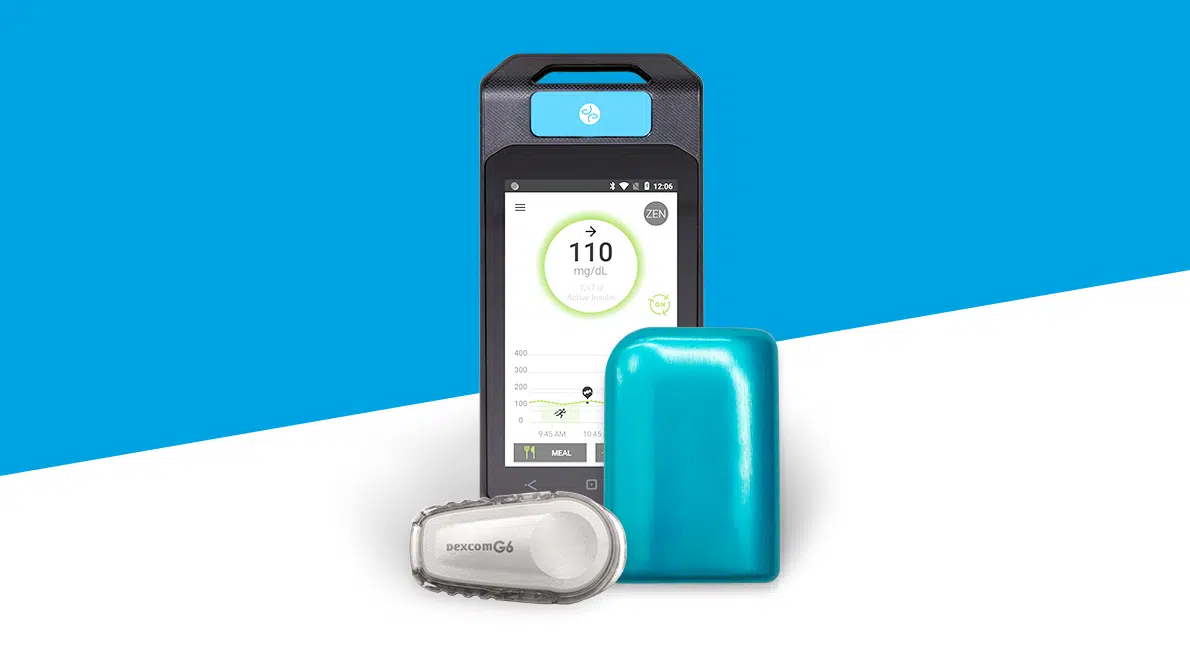
Diabetic foot: a potential complication of diabetes
Our feet are our points of contact with the ground, enabling us to stand up and walk. Although they are essential, do we pay enough attention to their well-being and are we grateful enough for what they do?
If you are living with diabetes, preventive care and protection are recommended to avoid lesions of the skin of the feet. What’s more, it is advisable to conduct regular examinations for signs or symptoms that would indicate some deterioration in the health of the skin of the feet (arteries, nerves).
Can diabetes cause skin lesions in the feet? If yes, in which cases?
According to the International Working Group on the Diabetic Foot IWGDF1, for people living with diabetes, experiencing chronic hyperglycemia, certain complications can arise in the lower limbs:
- neuropathy (loss of sensitivity to heat, cold, pain or, conversely, specific pain especially in the legs and the feet);
- decrease in arterial perfusion (peripheral arteritis, ischemia);
- changes in the statics and joints of the toes and foot (claw toe, sagging of the arch, areas of excessive keratosis).
These complications weaken the foot, making it more vulnerable to an external trauma that could ulcerate the skin (foreign bodies, unsuitable footwear, nail clippings).
Diabetes affects the immune system (immunosuppression), which can lead to the development of an infection (mycotic and/or bacterial).
Diabetic foot sores can be classified into 3 groups according to their cause:
> purely neuropathic origin (nerves, 35%);
> purely ischemic origin (arteries, 15%);
> mixed neuro-ischemic origin (nerves and arteries, 50%).2,3,4,5
Studies estimate that 4-10% of all people living with diabetes will develop a foot sore. This is especially true for people with limited access to care.6
Foot sores: what treatment do they require?
A sore on the foot may require a hospitalization for specific care, which can sometimes take a long time.
The basic management principles are pressure relief, wound debridement, potential revascularization and management of infections.7
What can be the consequences of diabetic foot?
Fortunately, amputation is still a rare occurrence. It may be considered, particularly when the sore is treated late and occurs in an area with widespread vascular damage.
What is a diabetic foot ulcer?
A diabetic foot ulcer is an ulceration with a neuropathic origin, which is located on the plantar surface of the foot, in areas of excessive pressure, as a result of changes in the anatomy of the foot.
Horns (excess keratosis) are produced in the contact areas on the sole of the foot, which become ulcerated and can dig deep into the underlying tissue; this is what we call a diabetic foot ulcer?
Pressure unloading (soles, fitting footwear) is an essential component of care and treatment.
What are the local specific features of “damaged diabetic foot”?
As sores heal, the immune response mobilizes the white blood cells, which are the body’s defense system. Inflammation proteins are synthesized, particularly by the liver. The vessels play an important role because they not only provide the sore with oxygen, but also with different types of white blood cells, platelets, growth factors and cytokines that help to cleanse the wound and promote healing.
Diabetes delays the healing of sores, either by disrupting one or more of these mechanisms or by damaging the blood vessels and tissue, especially in the case of excessive inflammation8.
In the case of arteritis involving a narrowing or even the obstruction of the artery, the defense mechanisms cannot be implemented, leading to particularly serious sores.
In case of diabetic foot lesions, is it recommended to go to a specialist center?
A specialist center is an organization composed of several healthcare professionals (doctors, nurses, but also often medical pedicurists, ortho-prosthetists, etc.), who receive the people concerned, on an outpatient and/or inpatient basis. This center is very familiar with diabetic foot lesions and is able to treat them effectively.
| The advantages of a specialist center:
By turning to a specialist center for diabetic foot sores, people living with diabetes can benefit from: => a complete check-up (arteries, nerves, metabolism); => local care and suitable dressings, which will also include hygiene education; => the use of specific techniques if necessary (imaging, vascular and orthopedic surgery); => possible guided antibiotic therapy if the sore is infected; => pressure-unloading apparatus; => follow-up until the sore heals; => dietary advice; => prevention education to prevent recurrence. |
I live with diabetes and I have a foot sore: can my HbA1c level influence the healing process?
The hypothesis that better glycemic control, as measured by HbA1c levels, is associated with a decrease in healing time, is still a subject of discussion.9
Is correctly fitting footwear necessary?
To heal a lesion, we will use techniques to unload the pressure on the feet: insoles, temporary therapeutic footwear (TTF), temporary wound healing apparatus (TWHA), possibly a plaster cast or a removable boot, or a custom-made orthopedic shoe.
In preventive healthcare, when faced with a foot deformity, the use of suitable footwear can reduce plantar pressure by 30% compared to standard shoes, thus reducing the risk of injury.
In order to prevent recurrence of a trophic disorder, adapted treatment will be offered: medical pedicure care, proper footwear and therapeutic education.
Can this situation, and foot sores be prevented?
Therapeutic education is fundamental to teach people with diabetes to detect their ailments, and particularly to prevent foot injuries: care and hygiene, non-traumatic nail clipping, footwear adapted to foot deformities.
For example, to protect the feet, healthcare professionals recommend not walking barefoot, or in socks, whether at home or outdoors.
Also, medical pedicures (may require a medical prescription, depending on local regulations) may be used for subjects with feet that are already classified as grade 2 (neuropathy associated with foot deformity or arterial damage) or grade 3 (history of chronic foot sores).
Medical follow-up and screening for chronic complications of diabetes are recommended. Other cardiovascular risk factors (cholesterol, high blood pressure, active smoking, overweight, etc.) must also be treated.
In case of a lesion, early management by a trained multi-professional team with experience in the prevention and management of diabetic foot sores, is then advisable.
BIBLIOGRAPHY.
- https://iwgdfguidelines.org/guidelines/guidelines/
- Boulton AJ. The diabetic foot–an update. Foot Ankle Surg. 2008;14(3):120-4.
- Lobmann R, Schultz G, Lehnert H. Proteases and the diabetic foot syndrome: mechanisms and therapeutic implications. Diabetes Care. 2005 Feb;28(2):461-71.
- Armstrong DG, Lavery LA, Harkless LB. Validation of a diabetic wound classification system. The contribution of depth, infection, and ischemia to risk of amputation. Diabetes Care. 1998 May;21(5):855-9.
- The Sage Group. Diabetic foot ulcers, peripheral arterial disease and critical limb ischemia. Http://thesagegroupus/pages/reports/dfu-statisticsphp. 2012.
- Lavery LA, Armstrong DG, Wunderlich RP, Tredwell J, Boulton AJ. Diabetic foot syndrome: evaluating the prevalence and incidence of foot pathology in Mexican Americans and non-Hispanic whites from a diabetes disease management cohort. Diabetes Care. 2003 May;26(5):1435-8.
- Dinh T,Tecilazich F,Kafanas. Mechanisms involved in the development and healing of diabetic foot ulceration.Diabetes. 2012 Nov;61(11):2937-47
- Shuofei , Zhichun , Ting. Neutrophil Extracellular Traps Are Markers of Wound Healing Impairment in Patients with Diabetic Foot Ulcers Treated in a Multidisciplinary Setting. Adv Wound Care .January 2020; 9(1): 16–27.
- Fesseha BK, Abularrage CJ, Hines KF.Association of Hemoglobin A 1c and Wound Healing in Diabetic Foot Ulcers. Diabetes Care. 2018 Jul;41(7):1478-1485.






